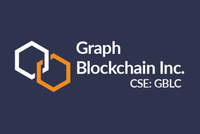What are the main challenges to mainstream blockchain adoption? Before mass adoption these obstacles will need to be dealt with.
Institutions have begun employing blockchain technologies at a greater scale, but the question of when mainstream adoption will be achieved relies on many factors.
Catherine Yoon, special counsel at Katten Muchin Rosenman, told the Investing News Network (INN) that blockchain is not entirely an Earth-shattering technology.
“[Blockchain] really is a database, it’s a ledger,” she said. “Instead of one person having access, the information and knowledge is shared. It’s important to take it to the basics.”
According to a report from KPMG in partnership with Coinbase, the maturation process for cryptocurrencies is projected to evolve in three stages: investment/speculation, institutionalization and utility. The first stage is currently taking place.
It is possible for the institutionalization and utility stages to overlap with each other. In order for cryptocurrencies to fully mature through these stages, greater trust, liquidity and accessibility must be achieved, notes the report. The integration of blockchain in institutions, from fintech companies to banks, exchanges and brokers, is the next step towards greater adoption.
BitPay CEO Stephen Pair told CoinTelegraph that he estimates that, within three to five years, establishments such as restaurants and retail will accept blockchain payment in some form.
Here, INN looks at four obstacles for mainstream blockchain adoption, according to serial entrepreneur and blockchain expert Kirill Bensonoff, who launched the crypto startup Caviar back in 2017.
1. Regulation
The absence of a clear regulatory framework is among the primary obstacles to mass adoption.
Regulatory clarity, notably in the United States, is most tantamount to the business community when it comes to blockchain progress, said Jack Lu, founder of crypto companies Wanchain and Factom, which were valued at close on Wednesday (May 8) at a combined US$120 million.
Enforcing a regulatory framework will provide clarity and assurance in distributed technology ledger systems. Regulation will further bring legitimacy into the space.
“If we think about the regulation for crypto, in the US it is still very unclear,” Bensonoff told INN. He added that countries such as Singapore, Malta, Estonia and Switzerland already have legal frameworks in place for blockchain-driven systems.
KPMG reports that, through establishing this regulatory framework, greater trust will be generated and in turn will increase the adoption of crypto, for example by institutional clients.
“In the meantime, this regulatory limbo is affecting adoption, with many waiting for some finality in legislation before they implement their own blockchain solution,” said Bensonoff.
2. Privacy
The second obstacle to the mainstream adoption of blockchain is privacy.
The organization of blockchain makes data on the blockchain public. This means that industries such as healthcare could face data privacy issues.
Researchers and blockchain developers at the Massachusetts Institute of Technology (MIT) are developing possible solutions to this problem.
As part of the MIT Enigma project, developers are building features that protect personal data via “secret contracts.” Here, a blockchain node prevents personal data from being revealed on the public ledger.
Enigma published a paper that further details how these “secret contracts” could, for example, be applied to an anonymous general election voted on using a distributed ledger. Citizens could vote online through the ledger system, and consequently their identities would be hidden with these nodes. In addition, the election results would be visible on the public ledger.
Additional solutions to privacy obstacles, Bensonoff noted, include: stealth addresses, which generate a one time address to prevent the ability to track addresses; ring-confidential transactions, which conceal transaction amounts to outside parties; and state channels, which create a separate channel where users can transact privately.
3. Usability and cost
The ability for a blockchain platform to be easily usable and cost effective is the next obstacle to widespread blockchain technology adoption.
“The ideal vision for the future of interoperability between blockchains is a world where the user interacts with applications without any knowledge that value and data are being transferred across multiple blockchains in the background,” said Lu.
Currently, the functionality and usability of blockchain technology remains a barrier for mainstream adoption. Yoon noted that currently blockchain is still too complex; if blockchain is more difficult to set up than a mobile banking app, it isn’t ready yet.
Once the integration and usability of blockchain evolves, the ability to operate among various blockchain use cases will become more evident across a number of verticals. Supply chains are an excellent use case example, Yoon further said.
The financial services industry offers a number of blockchain use cases. For example, securitizing equity or debt presents a use case that allows the security to be represented on a blockchain in usable form, said Bensonoff. Blockchain has the ability to serve a number of use cases within this industry.
In addition, payment transactions have benefited from distributed ledger technology.
A report from KPMG shows that for under US$1 Litecoin has transferred US$99 million in value in a short amount of time.
“There’s large institutional use cases for banks with cross border payments and fast settlements and exchanges. So for fintech, I think it’s a game changer,” said Bensonoff.
Secondly, blockchain can be expensive for enterprises. Mainframe investments may be required for companies to host blockchain. As the scale of network members and the number of transactions grow, the blockchain ledger in turn will increase in size, demanding more investment in mainframes.
Power, storage, maintenance and execution costs are other factors to be taken into account for further blockchain implementation and widespread adoption.
Cloud-based technology solutions offer one possible solution. Tech behemoths such as IBM (NYSE:IBM) and Microsoft (NASDAQ:MSFT) have already introduced such services, said Bensonoff. Amazon’s (NASDAQ:AMZN) AWS cloud-based blockchain service claims that its centralized services operate at a faster speed than other blockchain frameworks.
4. Interaction with other systems
The final obstacle is the functionality and interaction between bitcoin applications and other networks. Impeding its progress are timely transactions.
Currently, blockchain transactions take time to process, hindering integration with other systems.
A solution for this is consensus mechanisms, Bensonoff noted. These further verify and validate the transactions recorded onto a distributed ledger.
“This mechanism creates a trust and validity in the transaction between participants who aren’t familiar with each other,” Bensonoff said.
Investor takeaway
Current trends are showing that more institutions are investing in more blockchain systems.
“With bitcoin, for example, institutions are investing, endowments are investing, pension funds and venture capitalists are definitely very active,” said Bensonoff.
Companies from Fidelity Investments (NYSE:FNF) to TD Ameritrade (NASDAQ:AMTD) are actively adopting systems for bitcoin trading, for example.
The ability for blockchain to create widespread access to services is compelling. However, overcoming barriers including regulation, usability and cost, privacy and interaction with other systems will need to be overcome before blockchain applications gain greater scale and functionality.
Don’t forget to follow us @INN_Technology for real-time news updates!
Securities Disclosure: I, Dorothy Neufeld, hold no direct investment interest in any company mentioned in this article.
Editorial Disclosure: The Investing News Network does not guarantee the accuracy or thoroughness of the information reported in the interviews it conducts. The opinions expressed in these interviews do not reflect the opinions of the Investing News Network and do not constitute investment advice. All readers are encouraged to perform their own due diligence.




